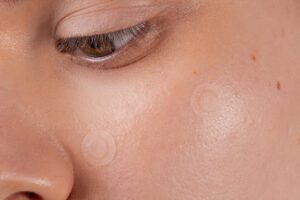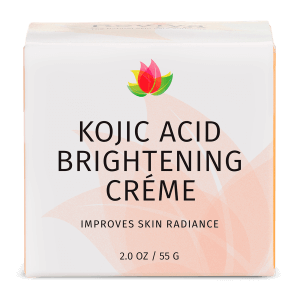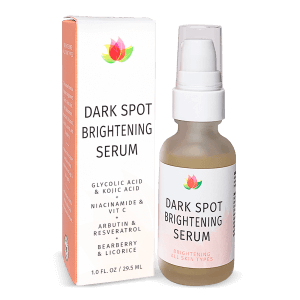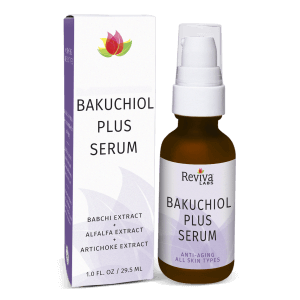Clean Beauty, Ingredients, Reviva Labs, Skin Care
Understanding Skin Hyperpigmentation Pathways: Causes, Treatments, and Prevention
Skin hyperpigmentation is a common dermatological condition characterized by the darkening of the skin due to an increase in melanin production. Melanin is a pigment responsible for the color of our skin, hair, and eyes. This article aims to provide a comprehensive understanding of the various pathways involved in skin hyperpigmentation, its causes, treatments, and preventive measures. By analyzing the most pertinent facts and details from multiple sources, we hope to offer a complete and distinct guide on this topic.
Section 1: Melanogenesis and Melanin Production
1.1 Melanogenesis
Melanogenesis is the process by which melanocytes (specialized skin cells) produce melanin. This process is regulated by various enzymes, signaling pathways, and receptors. Melanogenesis occurs in melanosomes, which are specialized organelles within melanocytes.
1.2 Melanin
Melanin is a pigment responsible for the color of our skin, hair, and eyes. There are two major types of melanin: eumelanin (brown to black) and pheomelanin (yellow to red). The ratio of these two types determines the overall skin color.
1.3 Factors Affecting Melanin Production
Several factors can influence melanin production, including genetics, hormones, and environmental factors such as UV radiation. Dysregulation of melanin production can lead to various skin pigmentation disorders, including hyperpigmentation.
Section 2: Skin Hyperpigmentation Causes
2.1 Sun Exposure
Excessive sun exposure is one of the primary causes of skin hyperpigmentation. UV radiation from the sun stimulates melanocytes to produce more melanin, leading to darkening of the skin. This is a protective mechanism to prevent DNA damage from UV radiation.
2.2 Hormonal Imbalance
Hormonal imbalances, such as those occurring during pregnancy or due to certain medications, can cause hyperpigmentation. Melasma is a common form of hormonal hyperpigmentation, characterized by dark, irregular patches on the face.
2.3 Inflammation
Inflammatory skin conditions, such as acne, eczema, or psoriasis, can lead to post-inflammatory hyperpigmentation (PIH). This occurs when the skin’s healing process leads to an overproduction of melanin in the affected area.
2.4 Genetics
Individuals with a genetic predisposition to hyperpigmentation are more likely to develop the condition. Certain genetic mutations can affect melanin production and distribution, leading to uneven skin tone and dark spots.
Section 3: Types of Hyperpigmentation
3.1 Melasma
Melasma, also known as chloasma, is characterized by dark, irregular patches on the face. It is more common in women and is often triggered by hormonal changes, such as pregnancy or the use of oral contraceptives.
3.2 Post-Inflammatory Hyperpigmentation (PIH)
PIH occurs as a result of skin inflammation or injury. It is characterized by dark spots or patches that appear after the healing of acne, eczema, psoriasis, or other inflammatory skin conditions.
3.3 Solar Lentigines
Solar lentigines, also known as sunspots or age spots, are flat, brown spots on the skin caused by chronic sun exposure. They are more common in older individuals and those with fair skin.
3.4 Freckles
Freckles are small, brown spots on the skin that are caused by an accumulation of melanin. They are usually harmless and can appear in individuals with fair skin who are genetically predisposed to develop them.
Section 4: Diagnosis and Assessment
4.1 Clinical Examination
A thorough clinical examination by a dermatologist is essential for the accurate diagnosis of hyperpigmentation. The dermatologist will evaluate the skin’s appearance, distribution of pigmentation, and any associated symptoms.
4.2 Dermoscopy
Dermoscopy is a non-invasive imaging technique that allows the dermatologist to visualize the skin’s surface and underlying structures. It can help in differentiating between various types of hyperpigmentation and guide appropriate treatment.
4.3 Skin Biopsy
In some cases, a skin biopsy may be necessary to confirm the diagnosis and rule out other skin conditions. A small sample of skin is removed and examined under a microscope to assess the presence and distribution of melanin.
Section 5: Treatment Options
5.1 Topical Treatments
Topical treatments for hyperpigmentation include skin lightening agents such as hydroquinone, glycolic acid, kojic acid, and azelaic acid. These agents work by inhibiting the production of melanin or promoting the shedding of pigmented skin cells.
5.2 Chemical Peels
Chemical peels use acids to exfoliate the skin and remove the upper layers of pigmented skin cells. They can be effective in treating hyperpigmentation but may require multiple sessions for optimal results.
5.3 Laser Therapy
Laser therapy uses focused light energy to target and break down melanin in the skin. It is a precise and effective treatment option for various types of hyperpigmentation, including melasma and solar lentigines.
5.4 Microdermabrasion
Microdermabrasion is a non-invasive procedure that uses fine crystals or a diamond-tipped wand to exfoliate the skin’s surface layers. This treatment can improve the appearance of hyperpigmentation by promoting the shedding of pigmented skin cells.
5.5 Cryotherapy
Cryotherapy involves the application of extreme cold to destroy targeted skin cells. It can be effective in treating localized hyperpigmentation, such as solar lentigines.
Section 6: Prevention Strategies
6.1 Sun Protection
Protecting the skin from sun exposure is crucial for preventing hyperpigmentation. This includes wearing sunscreen with a high SPF, seeking shade, and wearing protective clothing, such as wide-brimmed hats and sunglasses.
6.2 Skin Care Routine
Maintaining a consistent skin care routine can help prevent hyperpigmentation. This includes cleansing, exfoliating, and moisturizing the skin regularly, as well as using products containing antioxidants and ingredients that inhibit melanin production.
6.3 Managing Inflammation
Controlling inflammation and addressing underlying skin conditions, such as acne or eczema, can help prevent post-inflammatory hyperpigmentation. Seeking appropriate treatments for these conditions and avoiding skin irritants is essential.
6.4 Lifestyle Factors
Adopting a healthy lifestyle, including a balanced diet, regular exercise, and stress management, can contribute to overall skin health and prevent hyperpigmentation.
Section 7: Home Remedies and Natural Treatments
7.1 Vitamin C
Vitamin C is a natural antioxidant and skin lightening agent. Applying a topical vitamin C serum can help reduce hyperpigmentation and improve skin tone.
7.2 Aloe Vera
Aloe vera has soothing and anti-inflammatory properties, making it an effective natural treatment for hyperpigmentation. Applying aloe vera gel to the affected areas can help lighten dark spots and promote skin healing.
7.3 Green Tea
Green tea contains polyphenols, which have antioxidant and anti-inflammatory properties. Applying a green tea extract or steeped green tea bags to the affected area can help reduce hyperpigmentation.
7.4 Licorice Extract
Licorice extract contains an active compound called glabridin, which inhibits melanin production. It can be found in various skin lightening products or applied as a natural treatment for hyperpigmentation.
Section 8: Potential Complications and Risks
8.1 Treatment Side Effects
Some hyperpigmentation treatments, such as chemical peels and laser therapy, can cause temporary side effects, including redness, swelling, and skin irritation. It is essential to follow post-treatment care instructions to minimize these risks and ensure optimal results.
8.2 Treatment Failure or Recurrence
In some cases, hyperpigmentation may not respond to treatment or may recur after initial improvement. This can occur due to various factors, including genetic predisposition or inadequate treatment.
8.3 Skin Damage
Aggressive or inappropriate treatments for hyperpigmentation can potentially damage the skin and lead to further pigmentation issues. It is crucial to seek the guidance of a qualified dermatologist for the proper assessment and treatment of hyperpigmentation.
Section 9: Psychological Impact of Hyperpigmentation
9.1 Self-Esteem and Confidence
Hyperpigmentation can have a significant impact on an individual’s self-esteem and confidence. The appearance of dark spots and uneven skin tone can lead to feelings of embarrassment and self-consciousness.
9.2 Social Stigma
In some cultures, hyperpigmentation can be associated with social stigma, leading to discrimination and isolation. This can further exacerbate the psychological impact of the condition on affected individuals.
9.3 Importance of Support and Understanding
It is essential for friends, family, and healthcare providers to offer support and understanding to individuals dealing with hyperpigmentation. Providing a safe and empathetic environment can help minimize the psychological impact of the condition.
Section 10: Future Research and Developments
10.1 Advancements in Treatment
Ongoing research aims to develop more effective and targeted treatments for hyperpigmentation, such as novel lightening agents and advanced laser technologies.
10.2 Understanding Genetic Factors
As our understanding of the genetic factors involved in hyperpigmentation increases, we may be able to develop personalized treatment strategies based on an individual’s genetic makeup.
10.3 Preventive Measures
Future research may also focus on the development of preventive measures to address the underlying causes of hyperpigmentation, such as environmental factors and hormonal imbalances.
Conclusion
Understanding the various pathways involved in skin hyperpigmentation is crucial for the development of effective treatments and prevention strategies. By staying informed about the causes, types, diagnosis, treatments, and preventive measures, individuals can take a proactive approach to managing this common dermatological condition. It is essential to consult a qualified dermatologist for the proper assessment and treatment of hyperpigmentation and to follow a consistent skin care routine to maintain overall skin health.












